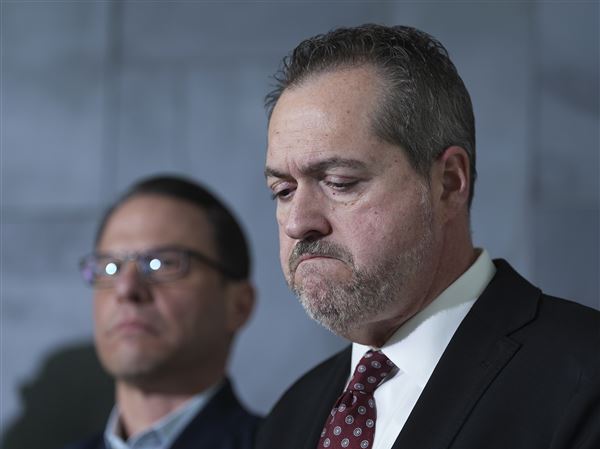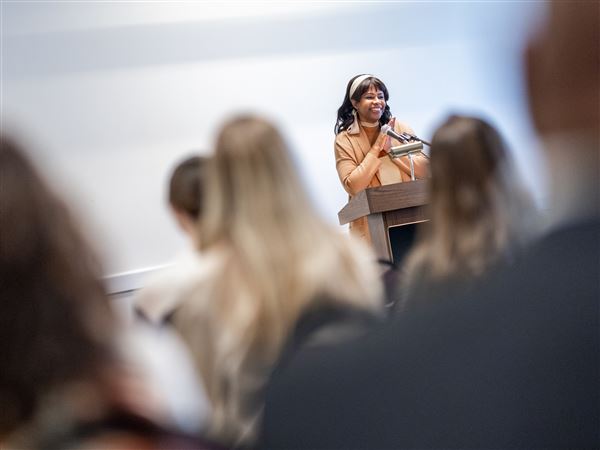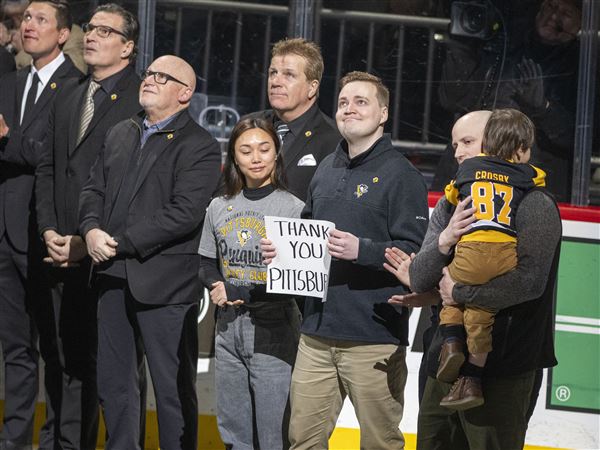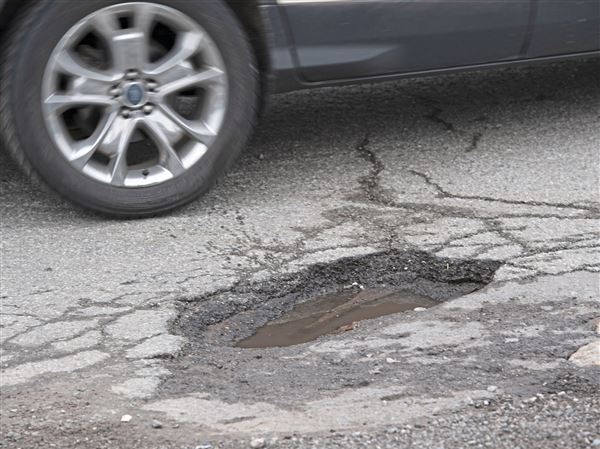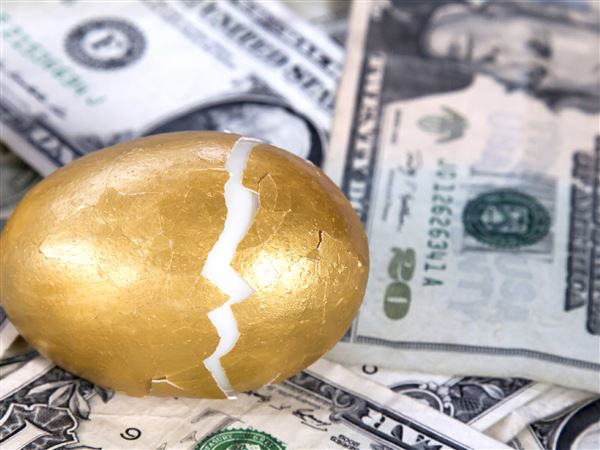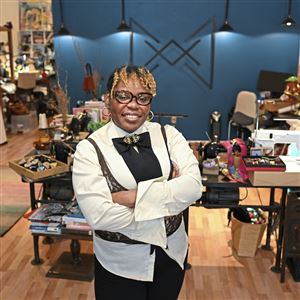John Bednar, 18, knows the drill when it comes to cavities -- and the drill, needles and novocaine that come with getting them filled.
But, when the young Oakdale man found out he no longer had to undergo the procedure's discomfort thanks to laser technology, he was thrilled.
"That was the whole thing?" Mr. Bednar asked after Oakdale dentist Robert Luther Jr. finished the 15-minute procedure recently. "At the end, it was weird, but it is better than the other kind."
Dr. Luther thinks so, too. He said he can handle up to 70 percent of patients who need cavity preparations without local anesthesia.
Without the shrill noise of the traditional drill, lasers are less frightening, he said.
As Dr. Luther worked on John Bednar, light from the laser tool pulsed with sounds like a woodpecker. The laser beam combined with a spray of air and water to keep the tooth cool. Then, the laser light was absorbed into the tooth's spot of decay -- all without the laser cutting into the healthy enamel and dentin of the tooth. The laser works by heating water molecules in the tooth, which expand and dislodge decay.
After the tooth cavity has been cleaned out and disinfected by the laser, filling material is injected into the treated area.
"It doesn't produce the same odor and it is very conservative," Dr. Luther added. "It really seeks out the decay in the tooth and destroys the decay without destroying anything else."
So with such glowing reviews from both patient and dentist, why isn't the decades-old laser dentistry technology ubiquitous in southwestern Pennsylvania?
The answer has to do with the American Dental Association's conservative position, a lack of convincing data that lasers work better than conventional drills, and a cost that might be too steep for some dentists.
While some dentists like Dr. Luther are early adopters of the laser technology, Doug Dederich, who co-wrote the ADA's position statement, said traditional treatment prevails because it works well. Lasers still have untapped potential, he said. Some lasers may be highly marketed as a treatment option, but there are insufficient clinical research demonstrating superior advantages over traditional methods, said Dr. Dederich, who worked with the ADA's Council on Scientific Affairs in the development of a report to the profession that outlines the scientific standards of evidence in the field of lasers in dentistry.
"The bottom line is that for dentists to justify the very expensive purchase, they should wait for a clinical trial," he said. "As a scientist, I am waiting for a well-designed study to be done by someone other than the manufacturer of the laser. There is a difference between what is marketed and what actually works."
In 1983, Robert Pick, official spokesman for the ADA and periodontist in Chicago, was on the pioneering team for the use of lasers in soft tissue at Northwestern University. But, while he said lasers is dentistry in the 21st century, Dr. Pick agrees with Dr. Dederich that a lot of research into the lasers hasn't been done.
"Dentists are analytical and they like to see data-based results," said Dr. Pick, who is also a clinical associate professor of surgery at Northwestern's medical school. "For hard tissue, there is a lot of research that needs to be done and there are lasers that need to be developed."
Soft tissue lasers are another story, Dr. Pick said, adding that they are far superior to traditional methods (in gum surgery, for example) that no one can argue about them.
"Soft tissue lasers are the standard of care," he said.
In the early 1990s, Dr. Luther purchased his first laser for use on soft tissue in the mouth. Slightly more than a decade later, in 2004, he invested $65,000 for his hard tissue laser.
It wasn't until five years later, in April 2009, when the American Dental Association released its position statement on lasers in dentistry. This statement encourages all dentists to request information from the laser's manufacturer in order to discuss the benefits and risks of this alternative treatment option with patients.
Dr. Dederich cautions dentists and patients from expecting better results with lasers until better research is reported. The cost of the equipment is significantly higher than standard drills, which can cost about $600.
"Lasers are sexy and make dentists look like they are at the edge of technology, but they don't have that data," said Dr. Dederich, who owns the Dederich Clinic in Canada and has a Ph.D. in biomedical engineering with a focus on the interaction of laser energy with tissue, teeth and bone. He has a speciality certificate in periodontics from the University of Pittsburgh.
Closer to home, at the University of Pittsburgh School of Dental Medicine, instructors cannot even teach dentists in training how to use the school's laser because of restrictions by the manufacturer.
Alan Timko, the first board-certified periodontist in Pittsburgh to use a laser in oral gum surgery, is also a clinical instructor at Pitt. Every week in his Tuesday class, his students ask about lasers, intrigued to learn more.
But because of the manufacturer's restrictions, he is not allowed to teach the topic. Instead, dentists must attend additional training post-graduation.
Although Pitt does have a laser, it is not a major part of the curriculum at the school, said Jean O'Donnell, associate professor in restorative dentistry/comprehensive care and associate dean in the office of academic affairs.
"At the University of Pittsburgh School of Dental Medicine, our students and residents are exposed to the use of lasers, principally with their application to periodontal disease, oral surgery and orthodontics," Ms. O'Donnell said.
In the next 10 years, lasers will be taught in all dental schools in the U.S. to some degree, Dr. Pick said. But, for now, dental schools already have much to teach within four years, he said.
"When you train a dentist or physician, there are only so many hours in a day, so you have to prioritize by level of importance," Dr. Pick said.
Dr. Dederich, who also teaches at the University of Alberta Department of Dentistry, said one of the ideas his students struggle with is how can the laser equipment be on the market but not be recommended for filling cavities.
"The profession as a whole is waiting to see more solid clinical evidence," he said.
In the meantime, Dr. Luther said he thinks the lasers are an important investment in his practice.
"I absolutely love my laser, and I think I've used my laser on about every patient this morning," he said. "For me, it is totally worth it."
First Published: July 1, 2013, 8:00 a.m.

